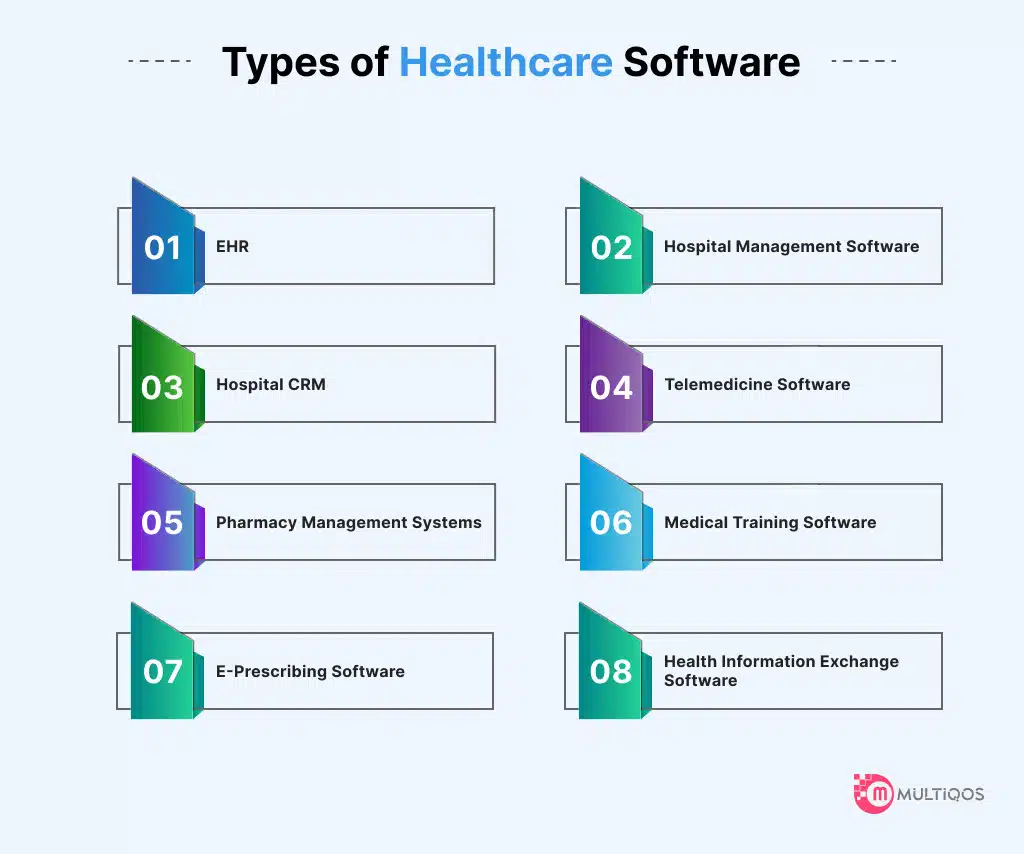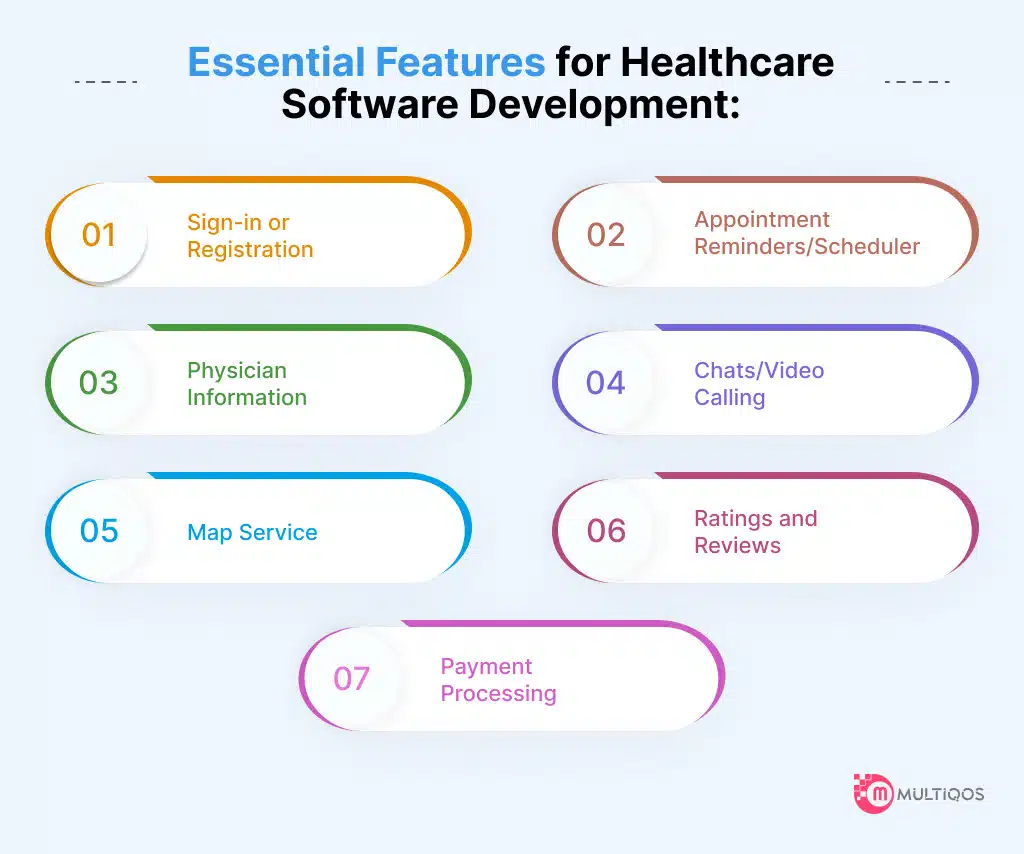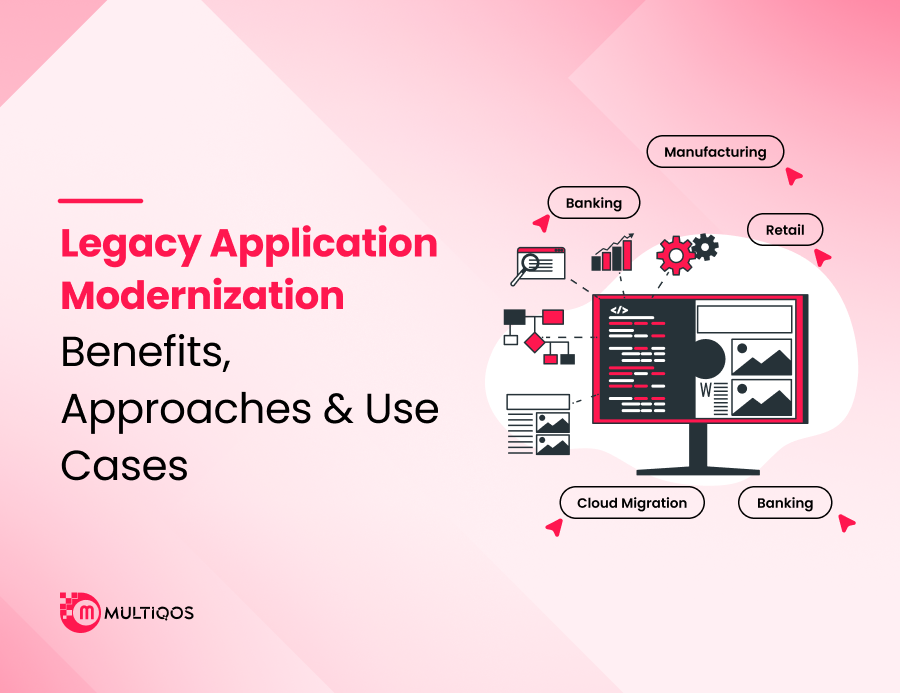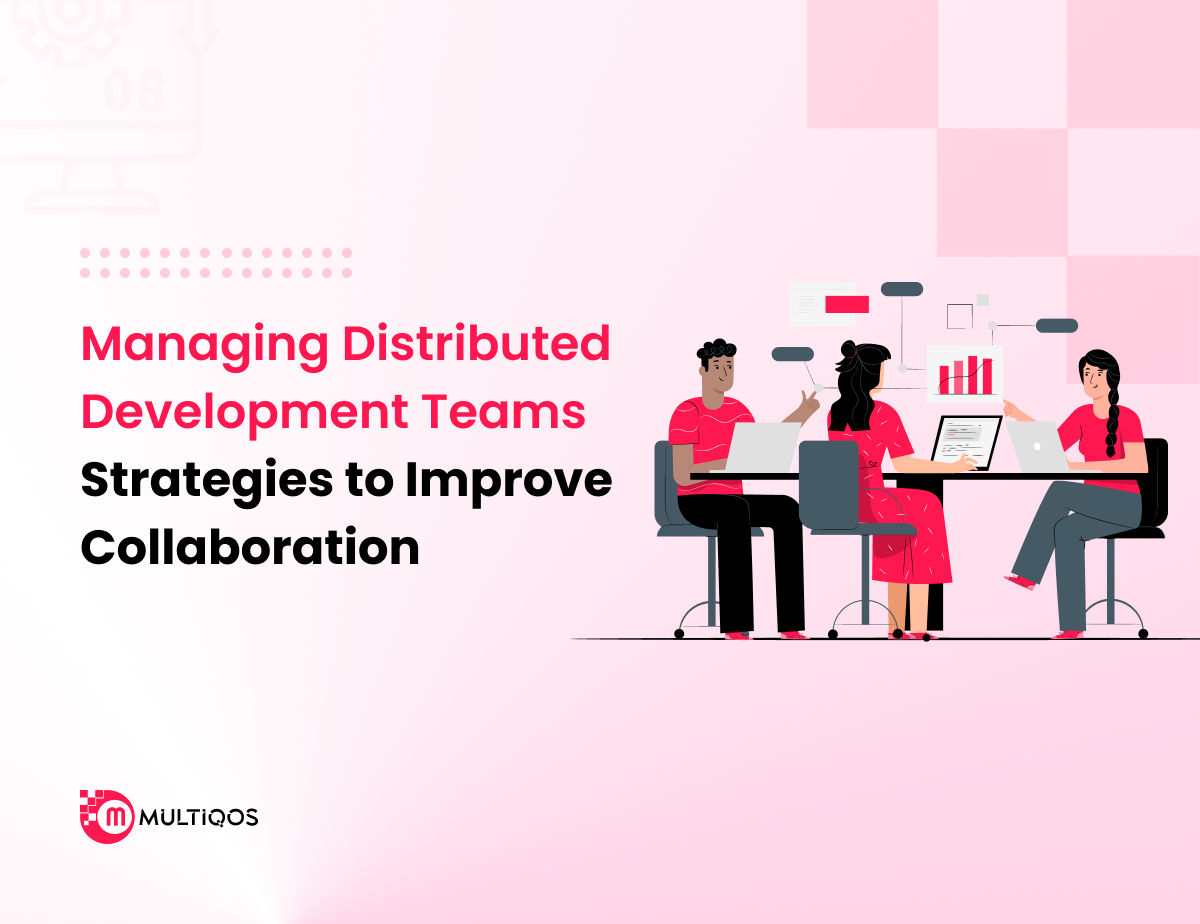Healthcare Software Development: Guide, Process, and Cost
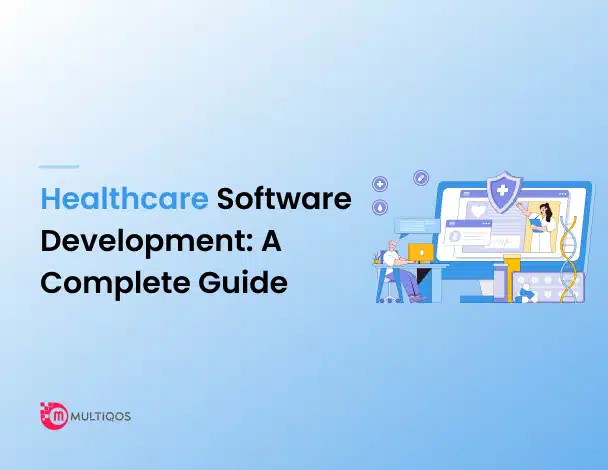
Today, software has become a pivotal part of our lives and we use it from banking to booking hotels. The use of software applications is also rising rapidly in the healthcare sector. It offers many advantages to organizations in this field.
Modern healthcare organizations need software to streamline operations, automate tasks, reduce time, and speed up processes. Software helps healthcare organizations improve patient care and minimize costs.
However, developing healthcare software requires careful planning and a hefty budget. So, in this article, we have covered everything that you must know about healthcare software development.
Read on to get the necessary information to make the right decision for your business.
What Do You Mean by Healthcare Software Development?
Well, just think of it like any other software development task but it specially applies to the healthcare sector. In simple words, healthcare software development is a process that involves creating a custom software product for a hospital or any other healthcare establishment.
More elaborately, it involves everything from software planning and designing to development that aligns with specific standards and compliances for the healthcare industry. These software solutions are meant to be used in healthcare entities for processing health-related data.
For example, it might be related to developing a web-based healthcare portal that allows patients to access their data like reports, prescriptions, diagnoses, and other details in a single centralized platform. The process of ideating, designing, developing, testing, and deploying such a portal is termed healthcare software development.
Developing a software solution for the healthcare industry is different from developing for any other industry. There are many strict requirements that these software solutions have to fulfill and adhere to stringent regulations such as HIPAA.
The use of software in healthcare offers many advantages including increased productivity, streamlined processes, improved efficiency, and better patient care.
Market Overview for Healthcare Software Development
The use of software and other IT technologies in healthcare is growing at a rapid pace. With the increasing demand for digital transformation has necessitated healthcare firms to adopt modern technologies and platforms to enhance efficiency and improve patient care.
Gone are the days, when long queues were a common sight in hospitals. Today, the use of digital technology has enabled hospitals and other healthcare institutions to automate processes and minimize the time it takes to process patient data.
All thanks to software solutions that healthcare organizations are leveraging to manage data and processes. Therefore, the need for software development in healthcare is showing an upward trend.
According to GrandViewResearch, the size of the healthcare IT market is projected to rise at a CAGR of 15.8% between 2024-2030 to cross $1200 billion which stands at around $700+ billion.
It shows the rapid expansion of IT solutions in healthcare that is poised to transform this industry. The implementation of new technologies and the growing use of smartphones are behind this constant transition.
The healthcare IT market will see significant growth in upcoming years and this is led by software solutions used across organizations in this domain. The rapid transition of the healthcare industry to IT-led solutions is also accelerated by the COVID-19 pandemic.
Prior to the pandemic, the expansion of healthcare organizations into digital technologies wasn’t as fast as it is today. The pandemic accelerated the process as healthcare organizations were overburdened during this time which led to inefficiencies.
The pandemic highlighted the flaws in most healthcare systems and helped organizations realize how the challenges they face could have been tackled with the use of technology. For example, doctors could use mHealth apps to consult and treat people remotely without getting in contact with them.
Types of Healthcare Software
The following are the different types of healthcare software that you can develop.
EHR
Electronic Health Record or EHR is a type of healthcare software that stores and manages healthcare records for patients that can be accessed by authorized healthcare service providers. In simple words, it is software that allows healthcare providers to access and manage patients’ health records like medical history, treatment plans, allergies, radiology images, and more.
Today, EHR is one of the most important software solutions for healthcare organizations as it streamlines the process of managing patients’ data. Plus, it can be seamlessly integrated with other hospital management systems like ERP to enhance patient care.
Hospital Management Software
As the name suggests, it is a kind of healthcare software that helps manage diverse processes in a hospital. While it helps manage data regarding a hospital’s staff, departments, and supplies, it offers more features to streamline the overall healthcare operations.
Primarily, the software is designed to help healthcare organizations streamline administrative tasks, billing, insurance, and manage patient information. It is also a crucial software solution for healthcare organizations.
Hospital CRM
Just like a CRM is used in any other organization, it works similarly for healthcare. It helps healthcare organizations manage customer relationships with automated processes and data-based actions.
This software can help organizations manage better relationships with customers by offering tailored customer services. It helps in better care quality, accurate reports on performance, and managing their contact with the customers.
Telemedicine Software
Telemedicine software solutions are a revolution in patient care. This software enables patients and healthcare providers to connect with each other remotely. Consequently, patients can get instant healthcare services at their doorstep without needing to visit a hospital physically and face long hospital queues.
This type of software is quite useful for patients with critical illnesses or those who cannot visit hospitals frequently. They can easily connect to the doctors even on far distances and get their treatment done from the comfort of their dwellings.
Features like file-sharing make it easy for patients to share their health data with doctors so they can offer the right treatment and prescribe medicines. Besides, the video-conferencing feature enables doctors to visually inspect the patient which helps in diagnosis and treatment.
Pharmacy Management Systems
Another important software solution for healthcare organizations is the pharmacy management system. Often healthcare organizations have a huge stock of medicines. Managing this stock requires an efficient system for various functions such as tracking expired medicines and restocking them.
The use of a pharmacy management system enables healthcare organizations to efficiently run pharmacies with automated stock management. It offers reminders for restocking medicines and helps track expired medicines.
Medical Training Software
Medical staff in a hospital or other healthcare organization requires constant training. Besides, new practitioners also require education to make them ready for healthcare services. This is where medical training/education software comes in handy. It helps in the training and education of medical staff.
The integration of technologies like AR, VR, and AI can make this software more effective by helping medical staff learn things in an interactive way.
E-Prescribing Software
Traditionally, doctors used to create prescriptions on paper that had several disadvantages including accidental damage or fear of losing them. It wasn’t convenient for both doctors and patients. However, this problem is widely solved by healthcare software solutions.
E-prescribing software digitizes the process of creating and managing e-prescriptions. With this software, doctors can directly create prescriptions in digital format and send them directly to pharmacies or drug stores.
It solves the main problems of both patients and doctors. The prescription is easily shared and stored. Plus, the prescription is well-preserved in digital format.
Health Information Exchange Software
This is a type of healthcare software that simplifies the process of sharing the health data of patients with other organizations. It offers a safe and quick way to share patient information. Since patient information is confidential and requires stringent security rules, this information cannot be shared directly.
Health Information Exchange software offers the required protection and helps share patient data conveniently across organizations. This improves patient care and offers more efficient healthcare services.
Essential Features for Healthcare Software Development
Creating the right healthcare software requires the implementation of the right features that will enable the users to accomplish their goals. The following is a list of essential features for healthcare software development.
Sign-in or Registration
This is a pivotal feature to enable users to securely access the software’s features. Registration involves taking some basic information from first-time users to make their accounts so they can seamlessly log in later. Sign-in option will enable existing users to log in to software with credentials.
Appointment Reminders/Scheduler
A patient can book an appointment and get reminders for the upcoming one. On the other hand, a health practitioner can utilize this feature to manage appointments and get reminders for upcoming appointments on time. It will simplify the process of scheduling appointments and getting notifications for both types of users.
Physician Information
This is quite a useful feature for patients that enables them to get information about a physician instantly. They can check different information including experience, specialty, location, and more. This information is helpful for patients in making their decisions.
Chats/Video Calling
Another essential feature of healthcare software aimed to help patients is online video conferencing or chats. With the use of online chats, patients can talk to doctors via the internet remotely and get solutions to their health problems.
Video conferencing features can even help patients see the doctors and talk to them. It enables doctors to check patients visually to examine their health conditions.
Map Service
Integrate map service into your healthcare application to allow patients to get the location of a healthcare service provider. This is a useful feature for emergency situations. Clear location information will help them go to the healthcare centers easily.
Ratings and Reviews
Patients can check ratings and reviews for different healthcare providers on a healthcare application or any other software. It helps them check the experiences of other patients and make the decision accordingly. It makes your software more transparent and customer-friendly. With ratings and reviews, patients can even get better care.
Payment Processing
Your healthcare software must have a payment gateway to allow users to make payments for the services they get. It offers a simple way to make payments. There must be multiple payment options.
These are not all the features that your healthcare software needs, the list goes beyond this with the following features.
- Push notifications
- Upload photos/files
- Patient history
- Dashboard
- Integration with EHR
The Complete Process to Develop Healthcare Software
The healthcare software development process is a multi-step process with various considerations. You can develop a top-notch healthcare software solution by following this process as mentioned below.
Discovery and Planning
The first and foremost step is to discover the problems you are willing to solve with your healthcare software product. For example, creating healthcare software development with all the basic features will not suffice because the users’ needs are evolving.
So, you need to do in-depth research and find out the pain points of your target audience. Check competitors and find out what they fail to provide. After the research, make a roadmap for developing the software with clear project requirements and budget allocation.
Create an Appealing Design
Once you have your plan ready, you can go for software design to craft an engaging user interface for it. It involves UI/UX designing to create the best user experience for your software application. With the creation of prototypes and mockups, you can check the application’s interface and behavior with a dummy solution.
Follow the latest app design trends and methods to create a top-notch solution. It will help you create amazing UI UX design services for your software application.
Choose the Right Tech Stack
Software development tech stack plays a crucial role in developing a robust, secure, and scalable solution. Hence, choosing the right tech stack is pivotal for its success. There are different types of technologies and frameworks to choose from that can help create cutting-edge solutions.
You can evaluate different tech stacks based on various parameters to check which one suits you the best. Make the right choice based on the pros and cons of different technologies, so you can have the most efficient technology stack for your software.
Build an MVP
Creating software requires a good amount of investment. And, if it fails, you will suffer a huge loss. However, you can minimize the impact by developing a minimum-viable product. An MVP is a type of software that doesn’t have all the features right away.
It means an MVP is a kind of software that has only necessary or most basic features that will attract the early adopters. You can gradually build the software by integrating more features with new iterations of it.
Developing an MVP requires less money, so you can minimize the cost. Plus, you can also validate your app ideas by starting with MVP development.
Quality Assurance
Testing and quality assurance is an essential process after software development. It involves checking the software for performance, quality, and security parameters. It ensures that the software meets the necessary standards and quality parameters.
Software testing is necessary to discover bugs and issues that can impact overall software functionality, performance, stability, and security. It involves functional and non-functional testing.
Deployment
Deployment is the stage where the software is deployed to the target platform. For example, software can be deployed to the on-premises server that can be easily accessed via the web. Or, it can be deployed to the cloud platform to make it available to a wide range of users.
If you develop a healthcare mobile app, it needs to be deployed to respective app stores for Android and iOS. There are different fees that both these app platforms charge for publishing applications.
Maintenance
Maintenance is a long-term process and it starts as soon as the software is running in the production environment. Regular maintenance is needed for software applications to keep them up-to-date, fix any bugs, ensure upgradation, and ensure smooth functioning. Maintenance is crucial to keep your software application always up and running.
What Will Be the Cost to Develop Healthcare Software?
The cost to develop healthcare software varies due to several factors including its complexity, number of features, third-party integrations, tech stack, team location, and more. Usually, the cost of developing healthcare software falls in the range of $20,000 – $300,000.
Factors like complexity play a crucial role in the cost of developing healthcare software. Complexity involves the level of customization and work it takes to develop the software. The more complex the software is, the more costly it will be to develop.
More customization will require additional development time resulting in more developer hours that will increase the cost. Similarly, team location can also affect the cost of developing it because there are different developer rates around the world.
| Region | Developer Rates (per hour) |
| USA | $70 – $120 |
| Australia | $80 – $140 |
| Europe | $65 – $90 |
| Asia | $25 – $50 |
As you can see in the above table, there are different developer rates around the world. So, the cost of developing a healthcare app will be higher in Australia and the USA, but it will be much lower in Asia. So, choosing the development team can affect the cost.
To Wrap Up
As the healthcare sector is booming with digital technologies, the demand for software is increasing. However, choosing the right software development company is crucial to developing the right solution.
MultiQoS is a trusted tech partner for developing top-notch software solutions with cutting-edge features. We develop software for a wide range of industries. You can leverage our expertise to develop feature-rich applications.
Contact us for detailed project discussion and build best-in-class software.
Frequently Asked Questions
There are many new trends in developing healthcare software as mentioned below.
- AI
- AR/VR
- Machine Learning
- IoT
- Blockchain
- Cloud
Choosing the best custom healthcare software developer requires you to consider several factors as given below.
- The software development company must have a profound industry knowledge to cope with inherent challenges and build a standards-compliant solution.
- Make sure that the company you choose has relevant expertise in the tech stack you have chosen to develop your software.
- Choose a company with the right team size to handle the project.
- The company should be able to develop the software with relevant standards and compliances as well as top security features.
Some examples of healthcare software solutions include:
- Fitbit
- MyFitnessPal
- Doctor on Demand
- Medscape
- Headspace
Get In Touch


